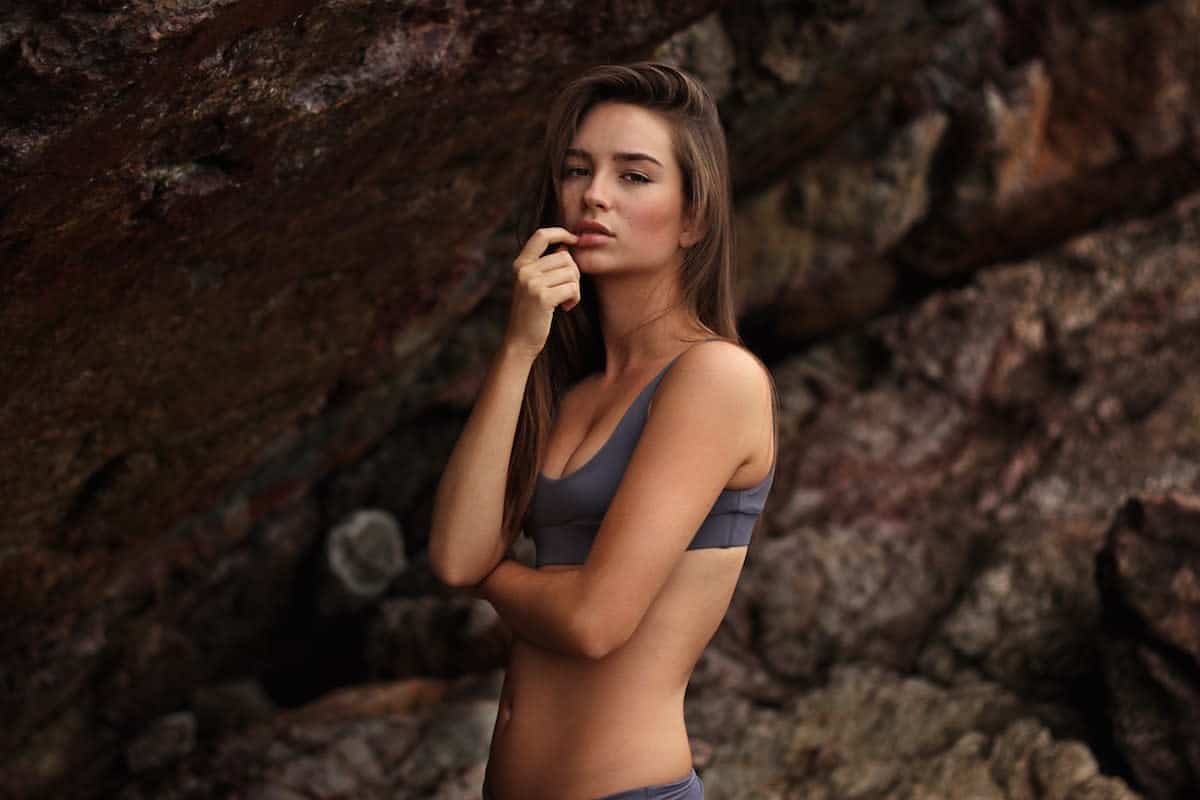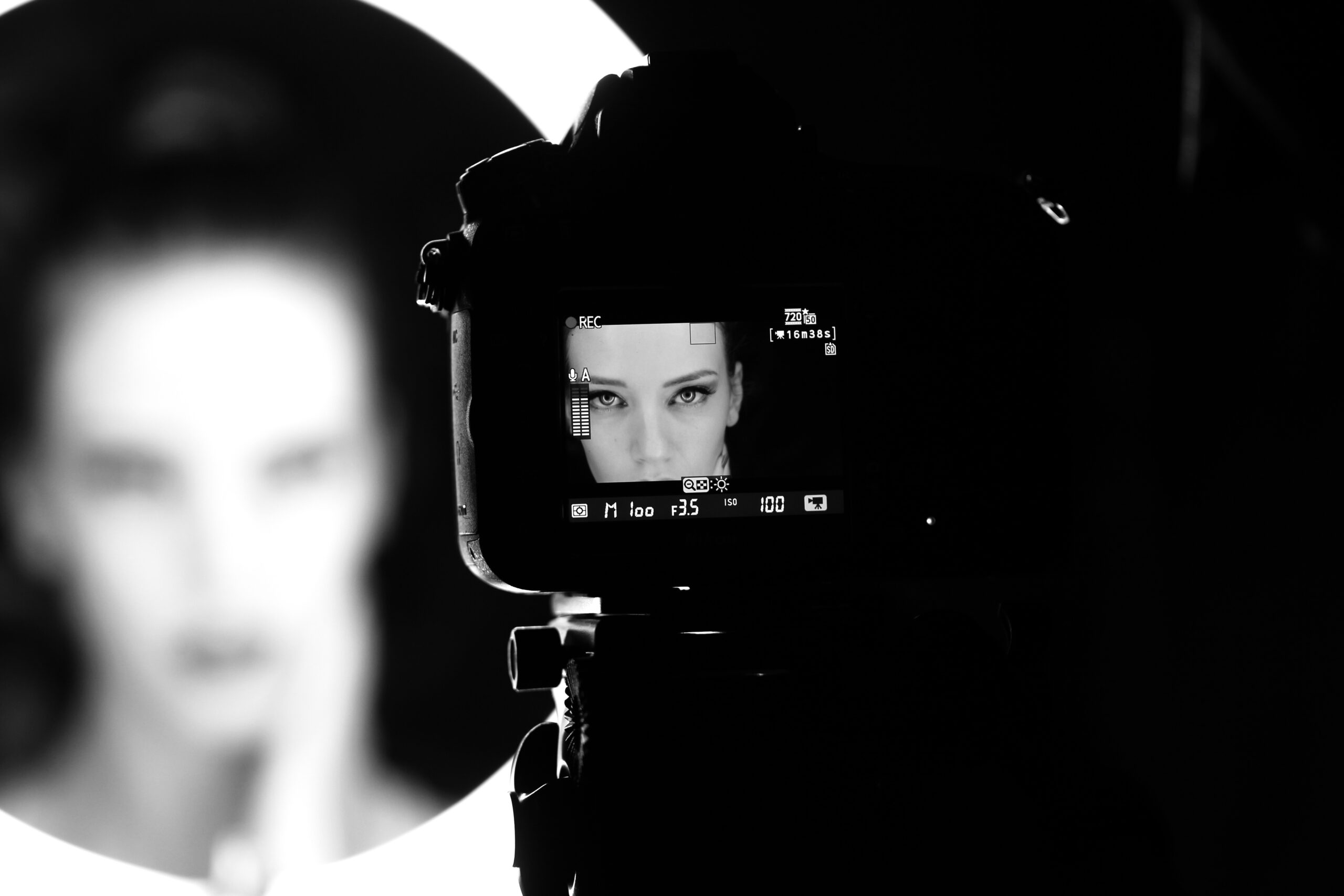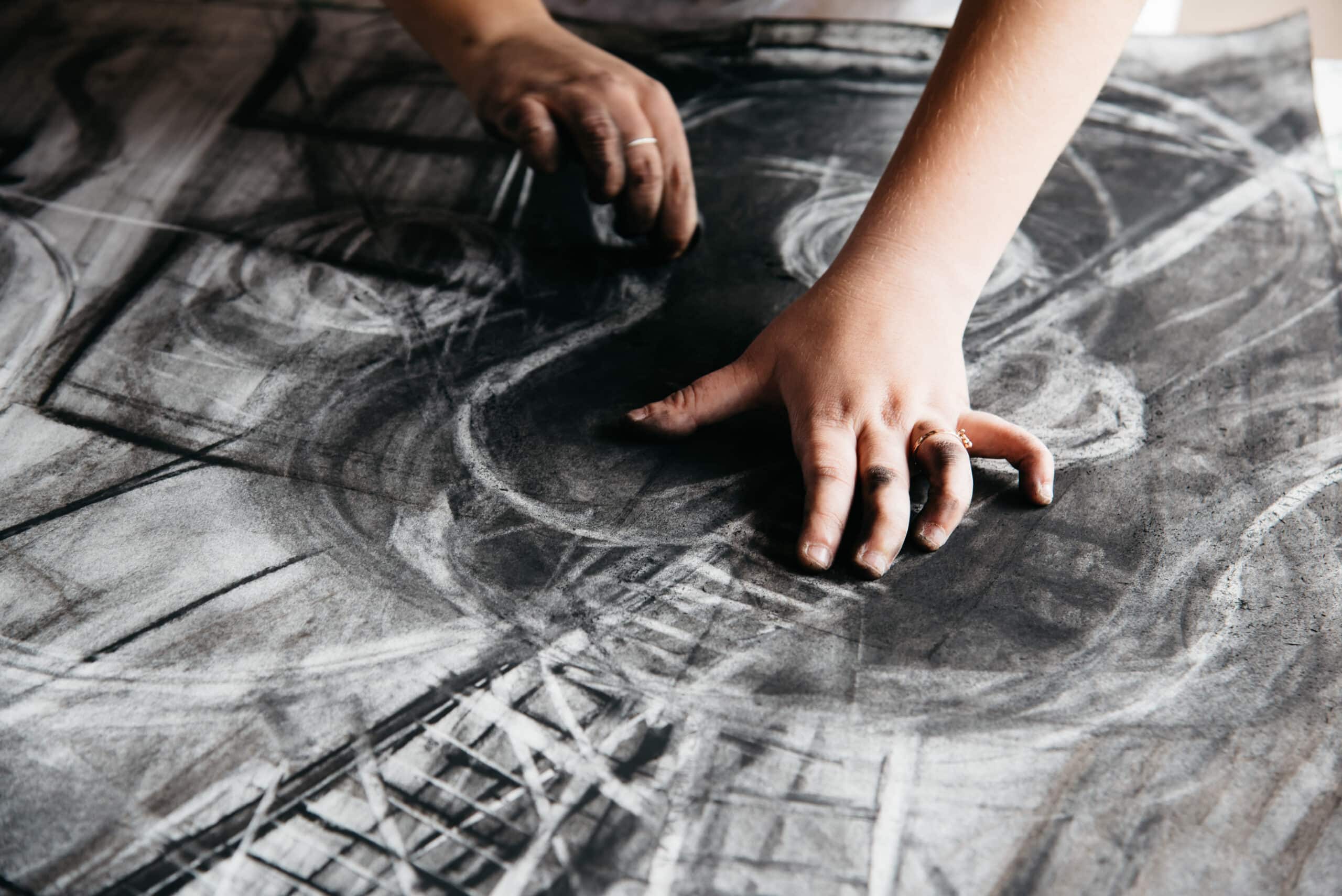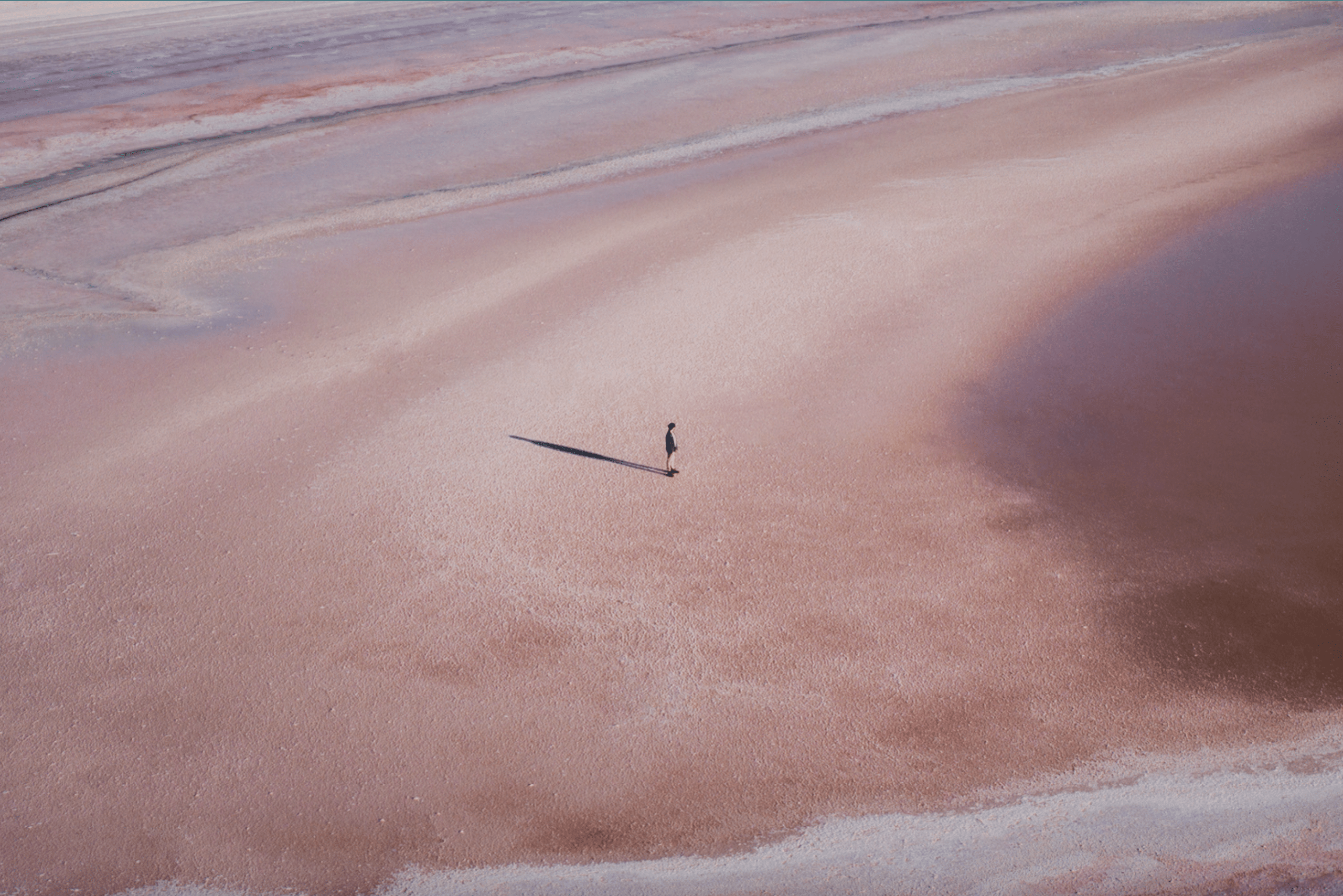So you want to start working as a model? We are excited to hear that, but we also know booking those initial jobs takes planning and preparation.
In particular, to land that first modeling job, you’re going to need a composite card for modeling, as well as a professional modeling portfolio—also known in the industry as your book. If you’re not sure what these are or how to put them together, we’re here to help you get started on your journey to building your career as a professional model.
Portfolio Books and Comp Cards for Models: How Do They Work
First, let’s take a closer look at understanding the different ways a model can put together a portfolio to showcase their work.
What Is a Portfolio Book for Models?
A model portfolio book showcases your talent and range as a model by displaying a variety of styles and looks within your genre.
What Is a Comp Card for Models?
A composite card for modeling—or, as they are usually known, a comp card—shows your best, most recent shots, alongside your measurements and modeling info (height, eye color, any special skills, etc.). You will need one full body shot, one from the waist up, and one of a close-up of your face. You should also include a profile shot with your hair up or held back.
Already Signed With a Modeling Agency?
If you’re already signed up with a modeling agency, the agency will help you build a model portfolio book before they start sending you out on castings.
The costs of the photoshoots and photo printing is usually arranged by the agency and covered with the assumption that you are an investment that will pay off for them. Keep in mind, when you start booking paid modeling jobs, a chunk of your payment goes towards your agency debts. You should never sign with an agency that asks you for money upfront!
Not Signed With a Modeling Agency Yet?
If you’re trying to get signed, you’ll need a killer portfolio book and comp card for modeling to get those first key jobs and, hopefully, sign with a top modeling agency.
If this sounds like something you’re interested in, we’re here to help you put together those two key criteria. Let’s get started!

Determine What Type of Shoots Suit Your Look
While there are many types of models, a successful model knows and capitalizes on his or her strengths. Focus on building a model portfolio book that resembles jobs you are best suited for.
For instance, if you have stunning cheekbones and facial features but you’re curvier or shorter than the average runway mode, you may be better suited for booking make-up brand campaigns or swimwear/lingerie, as opposed to high-fashion runway shows.
Alternatively, if you’re 5’11″, lean as a gazelle, and can stomp a catwalk with flair, then high-fashion runway shows could be your calling. Other modeling genres include commercial modelling, plus-size modelling, swimsuit/lingerie, fitness, and glamour.
If you’re not sure if your look is in demand, we’re happy to report that casting agents are broadening their talent horizons. You’ll find modeling agencies have expanded their talent roster and looking for a variety of different talents.
Winnie Harlow, for example, was the first vitiligo model to walk in the Victoria’s Secret show. Lauren Wasser, an amputee who lost both legs to toxic shock syndrome, now works as an editorial model. Madeline Stuart, who has Down Syndrome, recently walked the runway at Mercedes Benz Fashion Week!
Just remember to be your authentic self! In recent years, street casting has become more popular. People are being plucked from the streets and cast in fashion campaigns and movie lead roles. As long as you photograph well and know how to work the camera, you can make it as a model. Now, let’s move on to actually producing those all-important comp cards.

Comp Cards for Modeling: Nail Your Digitals
Models refer to digitals as digis, and they are the foundation of your model composite card.
Your comp card will include a four-photo collage of your digitals, as well as your height, measurements, and contact info. These photos are meant to show you as you would appear in a go-see, or a casting session.
Digis are also the simplest to produce! All you need is a digital camera and a friend or family member. (No one to help? Don’t let this deter you—there are plenty of easy DIY tutorials online.)
Best Tips on How To Make a Composite Card: Digitals
- When you make your own comp card, shoot your digitals in natural light with a neutral background close to a window, or even outside against a brick wall. Never shoot in direct sunlight as it will cast unflattering shadows on your face—stand in a shaded area close to sunlight.
- The setting should be neutral and natural, never an artificial set or staged backdrop.
- Wear casual but form-fitting black pants and a black top, or jeans (no rips) and a white tee. Avoid loud accessories or bright nail polish.
- For women, heels are a must! Keep them simple and three inches high. You want to highlight your physique and show off your height.
- A bare face is ideal for digitals, but if some minor touching up makes you feel more confident in front of the camera, go for it. Curl your eyelashes, powder your nose, pop on some lip balm, and spot conceal that zit that’s taking the spotlight away from you. Even models get bad hair and skin days! It’s no biggie.
- Look at other models’ digitals for inspiration—study standard female model poses and male model poses to see which ones feel best for you.
- Shoot one extra set of digitals in swimwear—this is to target those specific jobs, and to show off your body and any tattoos if you have any.
- Never digitally alter your digitals! This can be misleading for casting agents. Leave the Photoshop and filters out of it; your natural beauty should shine through.
If you want to make your own comp cards, it is absolutely possible. And yes, you can have success with it, but now is not the time for showing off your creativity or stepping outside the box. Casting agents have specific things they are looking for, and the more “by the books” you are when making comp cards, the more likely it is that you’ll land the jobs that are best suited for you.

Building Composite Cards for Models Provides The Opportunity to Collaborate With Photographers
Now that you have your digitals, you can start using them to link up with photographers to build your model portfolio book.
At this point, you can always hire a professional photographer, but, if you’re on a budget, try to arrange a Trade For Prints shoot (TFP). Essentially, this is where you produce a shoot with a photographer, free of charge, and you both get paid in the resulting shots. This is a great way to start filling up your model portfolio book.
Here are a few tips when working with a photographer to create comp cards for modeling:
- Find a photographer whose work you like. You can use multiple resources to find photographers: DM them on Instagram, reach out to film/photography students, or post in local photography groups on Facebook. The more shooters you work with, the more variety you’ll have for your model portfolio book.
- Send potential photographers your digitals and tell them what you have in mind for a shoot. Ask them what’s on their wish list—a new photographer starting out might be dying to shoot some editorial looks but hasn’t had the perfect subject yet. Try a new style, even if it’s out of your comfort zone! Something as simple as a wig or some glittery eye-makeup can produce a killer shot or even reveal an aptitude for another genre of modeling.
- Be very cautious—do thorough research on the photographers and their work beforehand. If you’re under 18, a parent or guardian should always be on set with you. If a photographer asks you to undress when it wasn’t discussed beforehand, that’s a red flag. A good photographer should make you feel safe and comfortable.

Get Your Professional Modeling Portfolio Ready
Now that you’ve put time into your comp card, it’s time to put some work into starting a modeling portfolio.
Your modeling portfolio book, commonly referred to as just your book, is what you’ll bring with you to castings—it should have a variety of professionally printed photos of your best work, highlighting your range as a model and how well you photograph.
Here are our best tips on starting a model portfolio book:
- Industry-standard is 9×12 inches—anything larger is acceptable, but not as compact and convenient for your bag.
- The portfolio should have plastic sleeves for your photos, and it must be black. This makes it easy to flip through and gives it a polished look. You can always upgrade to a leather-bound hardcover later.
- Curate your images carefully. Your book should start with your composite card.
- Ask a photographer friend—or even just a pal with a good eye and elevated taste—to vote on their favorite shots, and put the popular votes first in your book. You want to impress casting directors and designers. If you can’t be sure they’ll read 20 pages, don’t try to save the best for last.
- How many photos is ideal? If you’re just starting out, don’t feel obligated to fill every page with 40 photos. Don’t overdo it! As you work with bigger names, you can swap out old work for new.
- Consider having two separate books. If you find yourself consistently getting sent out for two very different types of jobs (i.e. skincare and swimwear), it may be a good idea to separate your photos by type so that your shots are relevant to the specific job you’re trying to get cast for.
- Never leave your book at a go-see. You do leave behind your model comp card, though. Have a sleeve in your model portfolio book full of them for easy distribution.
Assemble Your Model Portfolio Website
Now that you’ve got your portfolio book and composite card for modeling sorted, it’s time to put together your modeling portfolio website.
The easiest way? Just use a website builder with cool, modern templates to create a professional-looking online portfolio website in minutes. Having the perfect online portfolio is a great way to win over casting agents, brand reps, and photographers.
In addition, keep in mind that a major bonus to having a flawless online model portfolio is that it increases your odds of a direct booking.
A direct booking is when you get a print job without going to a casting. You’ve won a client’s trust by impressing them with your photos. Best of all, if you book a job without an agent, you owe no commission!
If you’re interested in benefiting from your own model portfolio website, look through some other amazing model portfolio website examples to get ideas for your own online portfolio.
Here are a few things to keep in mind when putting together your model portfolio website:
- Don’t forget to include the necessary details, like your measurements (height, bust, waist, hips, and shoe size). This is similar to your composite card for modeling, but digital.
- Link to your social media—in this day and age, social media plays a huge part in leveraging a model’s career. Your Instagram is essentially your third portfolio! Make sure to choose an online portfolio with Instagram integration so your feed is streamed right onto your site.
- Organize your shoots by type. This will help whoever’s viewing to find exactly what they are looking for.
- Share, share, share! Link your onlne por to your Instagram, network with fellow creatives on Reddit and other social platforms.
- Consider printing out business cards and having your portfolio website printed on them. They’re great to give to photographers and other creatives you meet while out and about.
Your Must-Haves: Portfolio Book, Online Portfolio, and Comp Cards for Models
At the end of the day, while booking your first few jobs as an aspiring model is no walk in the park, with some careful planning and preparation, you greatly increase your chances of booking your dream jobs.
In particular, we highly recommend having a professional portfolio book with a composite card for modeling, as well as a professionally designed online portfolio that highlights all of your best work.
Nail all three and you’re well on your way to building that dream modeling career.
The catwalk awaits—good luck!
Need more tips on how to dominate the modeling world?
Everything You Need To Know For A Successful Fashion Shoot
Why Nude Models Are Not Misled Women
How To Become An Instagram Influencer












